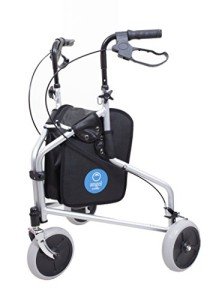This company has no active jobs
0 Review
Rate This Company ( No reviews yet )
About Us
The 10 Scariest Things About Medical Walker
Understanding Medical Walkers: A Comprehensive Guide
Medical walkers work as important mobility aids for people recuperating from surgery, handling chronic diseases, or handling age-related mobility problems. These gadgets not just enhance physical independence but likewise improve safety, permitting users to navigate their environments with greater ease. This article explores the types, benefits, functions, and factors to consider connected with medical walkers, along with some often asked concerns.
Tabulation
- Kinds Of Medical Walkers
- Benefits of Using a Medical Walker
- Secret Features to Consider
- Regularly Asked Questions
- Conclusion
1. Types of Medical Walkers
Medical walkers are available in different designs, dealing with different needs and preferences. The main types consist of:
| Type of Walker | Description |
|---|---|
| Requirement Walker | A rectangle-shaped frame with 4 legs, providing stability and support. |
| Two-Wheeled Walker | Comparable to a basic walker however equipped with wheels at the front for much easier motion. |
| Three-Wheeled Walker | A lightweight walker with three wheels, allowing for more maneuverability, ideal for indoor use. |
| Rollator Walker | A walker with 4 wheels, hand brakes, and a seat, appropriate for longer ranges and resting requirements. |
| Hemi Walker | Created for people who can use only one hand, featuring a tripod-like style. |
2. Benefits of Using a Medical Walker
Utilizing a medical walker presents several benefits that add to the user’s total wellness, consisting of:
- Increased Stability: Walkers supply a stable base of support, decreasing the threat of falls.
- Improved Mobility: They make it possible for users to walk around more quickly, promoting self-reliance.
- Discomfort Relief: By redistributing weight, walkers can ease pain in the joints, especially in the hips and knees.
- Posture Support: These gadgets encourage correct posture, decreasing strain on the back.
- Boosted Confidence: Users often feel more secure utilizing walkers, resulting in much better self-esteem and increased activity levels.
3. Key Features to Consider
When choosing a medical walker, it’s crucial to examine various functions to find the ideal fit. Here are some crucial aspects to consider:
- Weight Capacity: Ensure the walker can support the user’s weight while preserving stability.
- Height Adjustment: Look for a walker with adjustable height settings to accommodate the user’s height and provide comfy grip.
- Material: Lightweight aluminum walkers are simpler to steer, while steel walkers use more powerful support but might be heavier.
- Wheel Quality: If choosing a wheeled walker, consider the wheel size and tread. Bigger wheels navigate uneven surface areas more quickly.
- Seat Availability: If users will be walking for longer durations, a walker with an integrated seat can supply rest breaks when required.
- Brakes: Hand brakes are particularly crucial for safety in rollator walkers to manage speed and stop when required.
Types of Walkers with Features Comparison Table
| Walker Type | Weight Capacity | Height Adjustment | Wheels | Seat Available | Brakes |
|---|---|---|---|---|---|
| Requirement Walker | As much as 300 lbs | Yes | No | No | No |
| Two-Wheeled Walker | Approximately 300 pounds | Yes | Yes | No | No |
| Three-Wheeled Walker | Up to 250 pounds | Yes | Yes | No | No |
| Rollator Walker | Up to 400 lbs | Yes | Yes | Yes | Yes |
| Hemi Walker | As much as 250 pounds | Yes | No | No | No |
4. Frequently Asked Questions
Q1: Who ought to use a medical walker?A: Medical walkers are helpful for individuals recovering from surgical treatment, experiencing balance concerns, or requiring support due to age-related mobility obstacles. Q2: Can a medical walker be adjusted?A: Yes, many
medical walkers are height-adjustable to accommodate different user heights, allowing for a more comfortable grip. Q3: How do I choose the right walker for my needs?A: Consider factors such as the
user’s weight, height, kind of mobility problems, and whether they need a seat or brakes. Checking the walker for convenience and stability before purchase is also suggested. Q4: Are there any safety suggestions associated with utilizing a medical walker?A: Yes, users should ensure they don’t lean too
greatly on the walker, use it on steady and level surface areas, and constantly make sure
the brakes are engaged when seated or stationary. Q5: Can walking with a medical walker help with rehabilitation?A: Absolutely. Medical walkers are often suggested as part of rehab programs as they motivate
exercise, which aids in healing and mobility enhancement. 5.
Conclusion Medical walkers play an essential role in boosting the lifestyle for people facing mobility challenges. With numerous types and features offered, selecting the best walker involves thinking about the user’s specific requirements and circumstances. By understanding their benefits and proper use, people can restore independence, enhance their mobility, and browse their surroundings safely. Whether for short-term healing or long-term support, the ideal medical walker can substantially boost a user’s total wellness. Integrating a medical walker into one’s daily regimen can be a transformative choice, making it easier to take part in life’s everyday activities while making sure safety and self-confidence.

